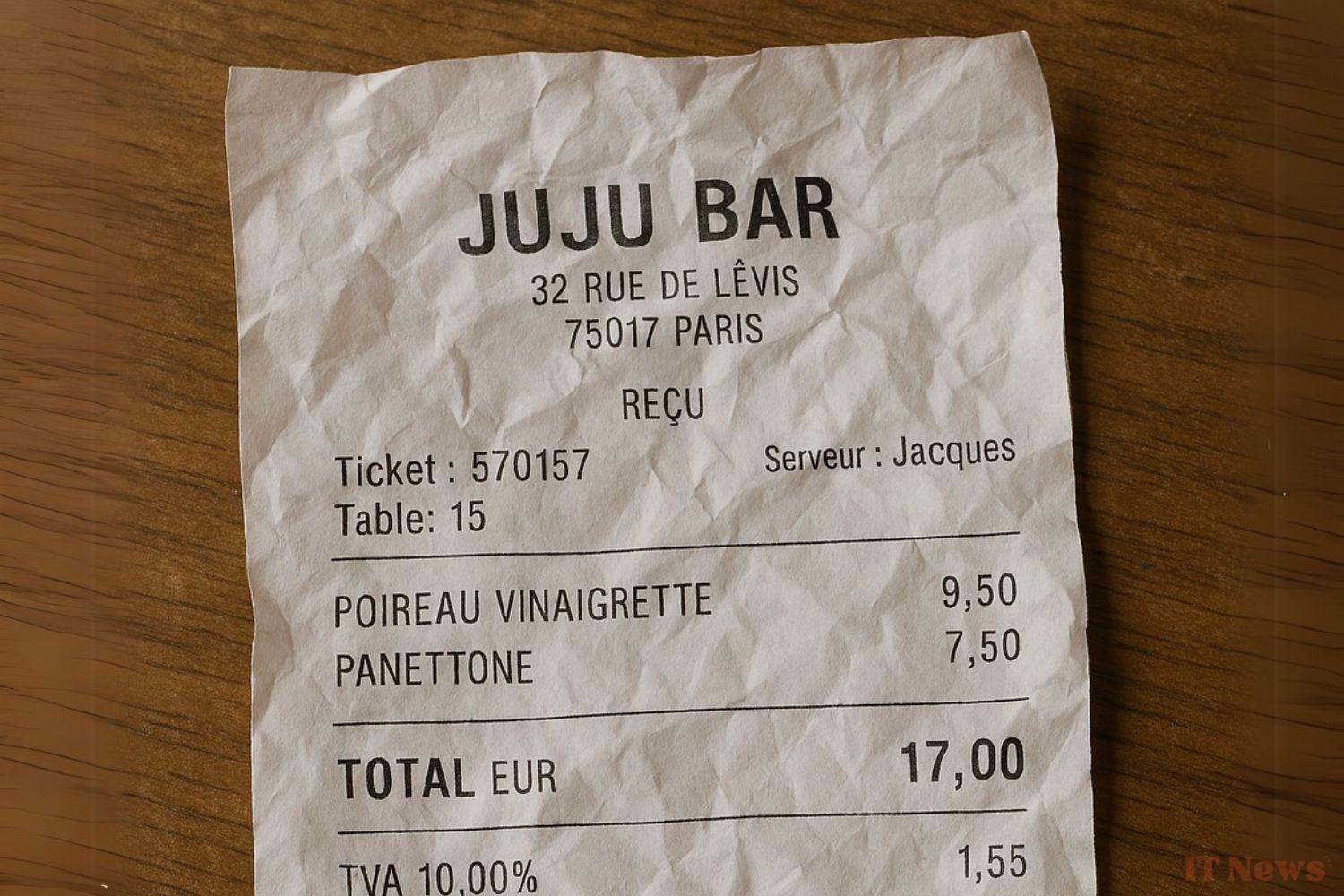Since its launch, ChatGPT's new image generator has sparked global enthusiasm. After having fun transforming the world into a Ghibli Studios animated film, Internet users quickly became aware of the extent of the possibilities offered by the image generator. Unlike its competitors, the chatbot is indeed capable of generating text with striking realism. This was all it took for the tool to be used at wrongly.
Fake receipts that are more real than life
The process is child's play. All you have to do is give a real receipt to ChatGPT, then ask it to modify the required information, such as the date, the amount of the bill, or the name of the restaurant. Even simpler, it is also possible to start from a blank frame, asking the algorithm to improvise from a few given instructions.
Our first tests are particularly convincing. While several Internet users criticize calculation errors, the receipt we generated is correct from the first try, even though we haven't provided any amount instructions. However, in the event of inaccuracies, it won't be difficult to quickly correct the AI's blunders by refining its command prompt.
It then only takes a few tries to get a perfect result: by asking ChatGPT to slightly crumple the paper, shift the framing, and add a few traces of dirt, you get a completely fictitious receipt, generated from scratch. This promises fraudsters to multiply their expense reports under the noses of their employers. Especially since according to the French Raphael Chenol on LinkedIn, the photo of the receipt is realistic enough to be accepted by an expense report application.
We will have to act, and quickly
Asked by TechCrunch, an OpenAI spokesperson confirmed that all images generated by the company contain metadata, clearly indicating their affiliation with AI. However, there are many ways to circumvent this: simply taking a screenshot removes the metadata. Furthermore, few companies actually verify this type of data.
While OpenAI has assured that it takes systematic action when users violate its rules, the company has also indicated that the generation of fake receipts did not fall within the scope of fraudulent use: “OpenAI's goal is to give users as much creative freedom as possible. However, these fake receipts are likely to be used in non-fraudulent situations such as “teaching financial literacy” for example. It's nice to dream...



0 Comments